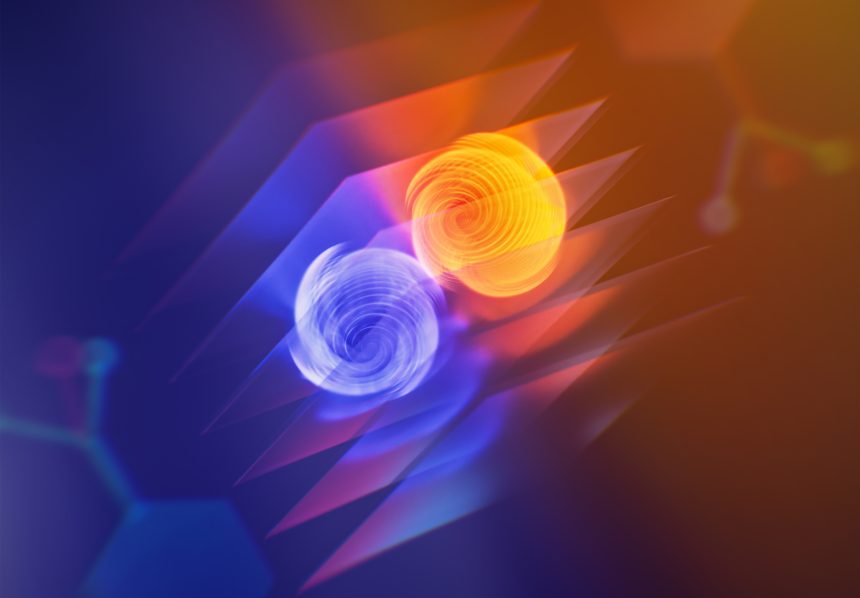A team led by researchers from the California NanoSystems Institute at UCLA designed a unique material based on a conventional superconductor — that is, a substance that enables electrons to travel through it with zero resistance under certain conditions, such as extremely low temperature. The experimental material showed properties signaling its potential for use in quantum computing, a developing technology with capabilities beyond those of classical digital computers.
The study was published in the journal Nature.
Conventional superconductors usually fail under magnetic fields of a certain strength. The new material continued to retain superconducting properties under a much higher magnetic field than the theoretical limit of a conventional superconductor. The team also measured how large an electrical current the new material can accommodate before it breaks superconductivity, applying electricity from one direction and then again from the opposite direction. The researchers found that one direction allowed notably higher current than the other. This is often referred to as the superconducting diode effect. In contrast, conventional superconductors would lose their zero-resistance property at equal current from either direction.
Quantum computers operate based on the counterintuitive rules that govern how subatomic particles interact. The basic unit of information in quantum computing, the qubit, can have a multitude of values. Meanwhile, the bit — the basic unit of information in classical computing — can only have one of two values.
While quantum computers could perform calculations that traditional computers cannot, the technology is still in its early days, with obstacles left to overcome before realizing its promise. One such obstacle is the fragility of the qubit. Minor changes in conditions can cause qubits to lose their quantum properties, which last only millionths of a second.
Researchers have theorized that an unconventional type of superconductor, called a chiral superconductor, may help increase qubits’ ability to maintain accuracy while performing a program’s steps.
Both chiral and conventional superconductors depend on quantum phenomena. Pairs of electrons become linked at a distance in a state known as entanglement, which imposes certain rules upon the properties of the electrons. In conventional superconductors, to abide by these rules, entangled electrons move in opposite directions and spin in opposite directions. In chiral superconductors, entangled electrons could spin in the same direction, and they have to abide by rules that make the relationship between their motion extremely complex, potentially opening new possibilities for tailoring the flow of current or processing information.
As an upshot of this contrast, the activity of electrons in conventional superconductors display symmetries that are broken in chiral superconductors, which favor flow in one direction over the other, as seen in the superconducting diode effect. Today, only a few compounds are candidates for chiral superconductivity, and they are extremely rare. In the current study, the researchers found a way to customize their material to coax a conventional superconductor to act like a chiral one.
The UCLA-led team created a lattice with alternating layers. One layer made of tantalum disulfide, a conventional superconductor, was as thin as three atoms. The next was made of a “left-handed” or “right-handed” molecular layer of a different compound. The investigators tested tiny nanoscale devices made from their lattice to evaluate whether the material showed the properties of a chiral superconductor.
Quantum computing may yield innovations such as unbreakable cybersecurity, supercharged artificial intelligence and high-fidelity simulations of phenomena, from the action of drugs in the body to the flow of city traffic to the fluctuations of financial markets. To get to those applications, quantum computers will need to make leaps in their ability to function despite potential disturbances to fragile qubits. Superconducting circuits are foundational to many quantum computing approaches, and the superconducting diode effect achieved by chiral superconductors is expected to be useful for creating more efficient and stable qubits.
In addition to its utility for quantum computing, chiral superconductors’ superconducting diode effect could make conventional electronics and communication technologies operate much faster while minimizing energy consumption. These qualities are particularly well suited for specialized applications such as computers working at extremely low temperatures in deep space.
Because chiral superconductors have been so difficult to find, engineering them from more readily available ingredients — such as in the new hybrid material reported in this study — could help unlock quantum computing’s potential while also driving improvements to electronic devices.
Source: University of California, Los Angeles
Published on August 12, 2024


